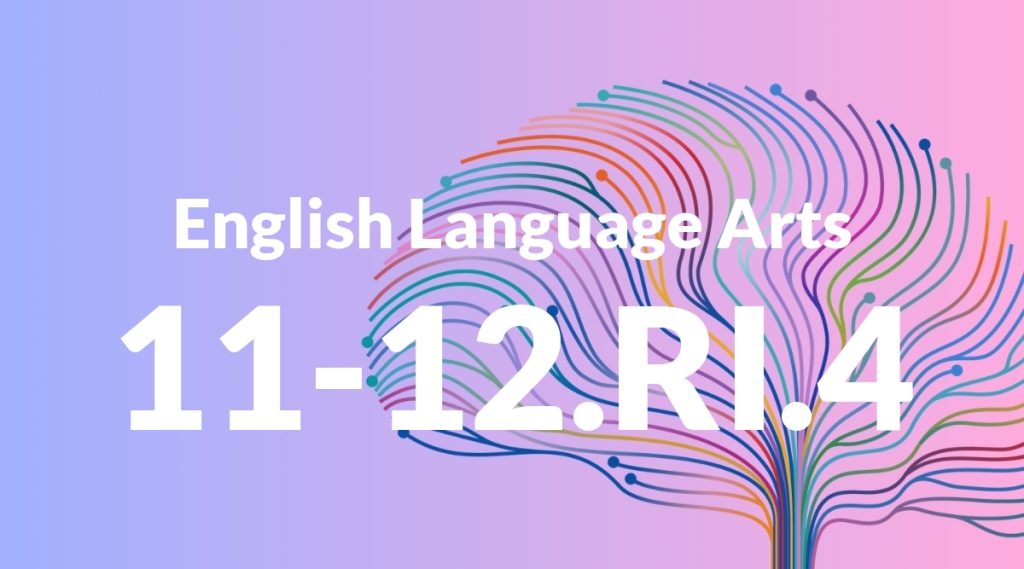Standard: 11-12.RI.4 – Determine the meaning of words and phrases as they are used in a text, including figurative, connotative, and technical meanings; analyze how an author uses and refines the meaning of a key term or terms over the course of a text (e.g., how Madison defines faction in Federalist No. 10).
Grade level: Grade 11-12
Subject: English Language Arts
Domain: Reading: Informational Text
Teacher Overview
This standard focuses on helping students determine the meaning of words and phrases in a text, including figurative, connotative, and technical meanings. It also emphasizes analyzing how authors refine key terms over the course of a text. This skill is crucial for deep comprehension and critical analysis of informational texts, preparing students for college-level reading and beyond. Students should already understand context clues, figurative language, and the difference between connotative and denotative meanings. Familiarity with the structure and purpose of informational texts is also important.
Mastering this standard will enable students to critically analyze and interpret the nuanced use of language in various texts, enhancing their overall comprehension and analytical skills.
Common Misconception 1
A common misconception is that the meaning of a word or phrase is always literal. This is incorrect because many words and phrases have figurative or connotative meanings that add depth to the text.
Intervention 1
To address this, provide students with examples of figurative language and have them discuss the meanings in context. This will help them understand that words can have multiple layers of meaning.
Common Misconception 2
Another misconception is that the meaning of a term remains constant throughout a text. This is not true, as authors often refine and develop the meanings of key terms to enhance their arguments or narratives.
Intervention 2
Use texts where key terms are employed in different ways and guide students through analyzing how these meanings evolve. This will help them see the dynamic nature of language.
Prerequisite Knowledge
Students should have a basic understanding of context clues, figurative language, and connotation versus denotation. They should also be familiar with the structure and purpose of informational texts.
Subsequent Knowledge
Students will develop the ability to critically analyze and interpret the nuanced use of language in various texts, enhancing their overall comprehension and analytical skills in both academic and real-world contexts.
Instructional Activities
- Close reading of political speeches to identify key terms and their meanings
- Group discussions on the use of technical jargon in scientific articles
- Analyzing figurative language in literary essays
- Evaluating connotative language in advertisements




